- Clone
- RMP-1 (See other available formats)
- Regulatory Status
- RUO
- Other Names
- GMP-140, Platelet activation-dependent granule membrane protein (PADGEM)
- Isotype
- Mouse IgG2a, κ
- Ave. Rating
- Submit a Review
- Product Citations
- publications

-

Thrombin stimulated C57BL/6 mouse platelets were stained with purified CD62P (clone RMP-1) (filled histogram) or purified mouse IgG2a, κ isotype control (open histogram), followed by anti-mouse IgG PE.
| Cat # | Size | Price | Quantity Check Availability | Save | ||
|---|---|---|---|---|---|---|
| 148301 | 50 µg | 85€ | ||||
| 148302 | 500 µg | 249€ | ||||
CD62P is a 140 kD type I transmembrane glycoprotein, also known as P-selectin, platelet activation-dependent granule membrane protein (PADGEM), and GMP-140. It is expressed on activated platelets, megakaryocytes, and endothelial cells. CD62P is primarily stored in secretory α-granules in platelets and Weibel-Palade bodies in endothelial cells, and is rapidly relocated to the plasma membrane upon activation. The ligands for CD62P are CD162 and CD24. A primary function of CD62P is cell adhesion during neutrophil rolling, and platelet-neutrophil and platelet-monocyte interactions.
Product DetailsProduct Details
- Verified Reactivity
- Mouse, Rat
- Antibody Type
- Monoclonal
- Host Species
- Mouse
- Immunogen
- Thrombin activated rat platelets
- Formulation
- Phosphate-buffered solution, pH 7.2, containing 0.09% sodium azide.
- Preparation
- The antibody was purified by affinity chromatography.
- Concentration
- 0.5 mg/mL
- Storage & Handling
- The antibody solution should be stored undiluted between 2°C and 8°C.
- Application
-
FC - Quality tested
ICC, IHC, WB, IP, ELISA - Reported in the literature, not verified in house - Recommended Usage
-
Each lot of this antibody is quality control tested by immunofluorescent staining with flow cytometric analysis. For flow cytometric staining, the suggested use of this reagent is ≤ 1.0 µg per million cells in 100 µL volume. It is recommended that the reagent be titrated for optimal performance for each application.
- Application Notes
-
Additional reported applications (for the relevant formats) include: immunofluorescence6, immunohistochemistry5, ELISA7, Western blotting4, immunoprecipitation4, and blocking in rats1,2 and mice3.
- Application References
-
- Walter UM, et al. 1997. Immunology. 92:290. (Block-rats)
- Johnston B, et al. 1997. J. Immunol. 159:4514. (Block-rats)
- Hickey MJ, et al. 1998. Circ. Res. 83:1124. (Block-mice)
- Walter UM, et al. 1997. Hybridoma. 16:249. (WB, IP)
- Alvarez A, et al. 2004. Blood 104:402. (IHC)
- Piccio L, et al. 2002. J. Immunol. 168:1940. (IF)
- Walter UM, et al. 1997. Hybridoma. 16:249. (ELISA)
- Product Citations
-
- RRID
-
AB_2564110 (BioLegend Cat. No. 148301)
AB_2564111 (BioLegend Cat. No. 148302)
Antigen Details
- Structure
- Type I transmembrane glycoprotein, 140 kD
- Distribution
-
Activated platelets, megakaryocytes, endothelial cells
- Function
- Adhesion, neutrophil rolling, platelet-neutrophil and platelet-monocyte interactions
- Ligand/Receptor
- CD162 (PSGL-1), CD24 and sialylated Lewis X
- Cell Type
- Endothelial cells, Megakaryocytes, Platelets
- Biology Area
- Cell Adhesion, Cell Biology, Immunology, Innate Immunity, Neuroscience, Synaptic Biology
- Molecular Family
- Adhesion Molecules, CD Molecules
- Antigen References
-
1. McEver R, et al. 1995. J. Biol. Chem. 270:11025.
2. Varki A. 1994. Proc. Natl. Acad. Sci. USA 91:7390. - Gene ID
- 20344 View all products for this Gene ID 25651 View all products for this Gene ID
- UniProt
- View information about CD62P on UniProt.org
Other Formats
View All CD62P (P-selectin) Reagents Request Custom Conjugation| Description | Clone | Applications |
|---|---|---|
| Purified anti-mouse/rat CD62P (P-selectin) | RMP-1 | FC,ICC,IHC,WB,IP,ELISA |
| APC anti-mouse/rat CD62P (P-selectin) | RMP-1 | FC |
| PE anti-mouse/rat CD62P (P-selectin) | RMP-1 | FC |
| Ultra-LEAF™ Purified anti-mouse/rat CD62P (P-selectin) | RMP-1 | FC,ICC,IHC,WB,IP,ELISA,Block |
| PE/Cyanine7 anti-mouse/rat CD62P (P-selectin) | RMP-1 | FC |
| TotalSeq™-C0229 anti-mouse/rat CD62P (P-selectin) | RMP-1 | PG |
| TotalSeq™-B0229 anti-mouse/rat CD62P (P-selectin) | RMP-1 | PG |
Customers Also Purchased
Compare Data Across All Formats
This data display is provided for general comparisons between formats.
Your actual data may vary due to variations in samples, target cells, instruments and their settings, staining conditions, and other factors.
If you need assistance with selecting the best format contact our expert technical support team.
-
Purified anti-mouse/rat CD62P (P-selectin)
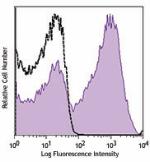
Thrombin stimulated C57BL/6 mouse platelets were stained wi... -
APC anti-mouse/rat CD62P (P-selectin)
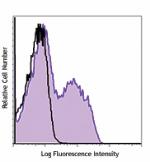
Thrombin-activated mouse platelets were stained with CD62P (... -
PE anti-mouse/rat CD62P (P-selectin)
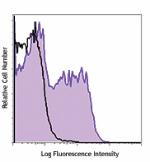
Thrombin-activated mouse platelets were stained with CD62P (... -
Ultra-LEAF™ Purified anti-mouse/rat CD62P (P-selectin)
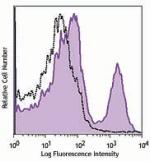
Thrombin-activated mouse platelets were stained with Ultra-L... -
PE/Cyanine7 anti-mouse/rat CD62P (P-selectin)
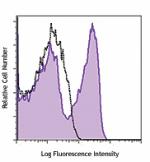
Thrombin-activated mouse platelets were stained with CD62P (... -
TotalSeq™-C0229 anti-mouse/rat CD62P (P-selectin)
-
TotalSeq™-B0229 anti-mouse/rat CD62P (P-selectin)
 Login / Register
Login / Register 






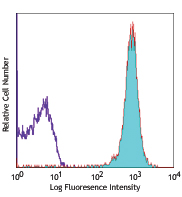
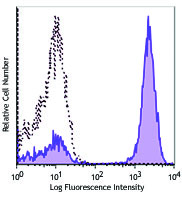
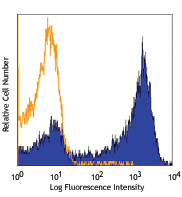



Follow Us